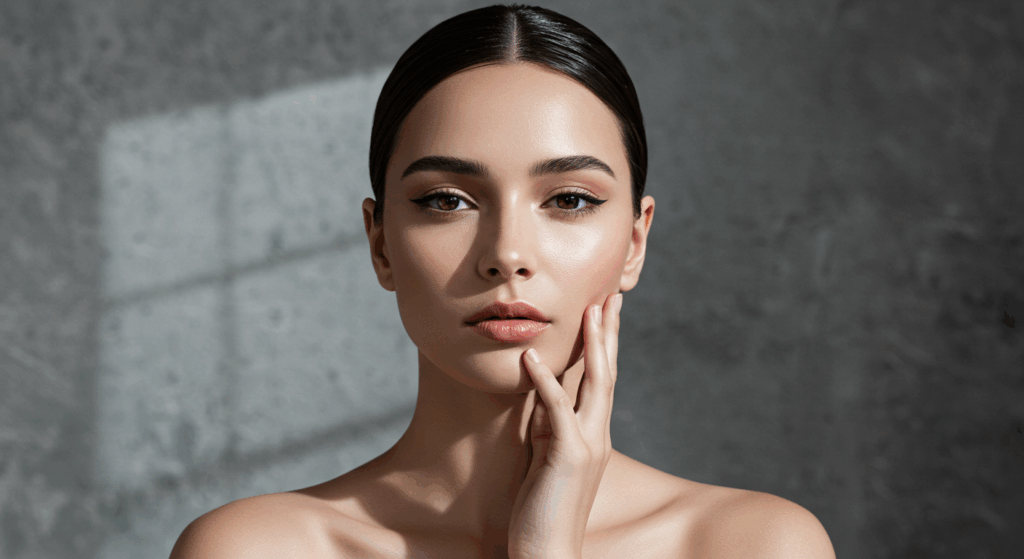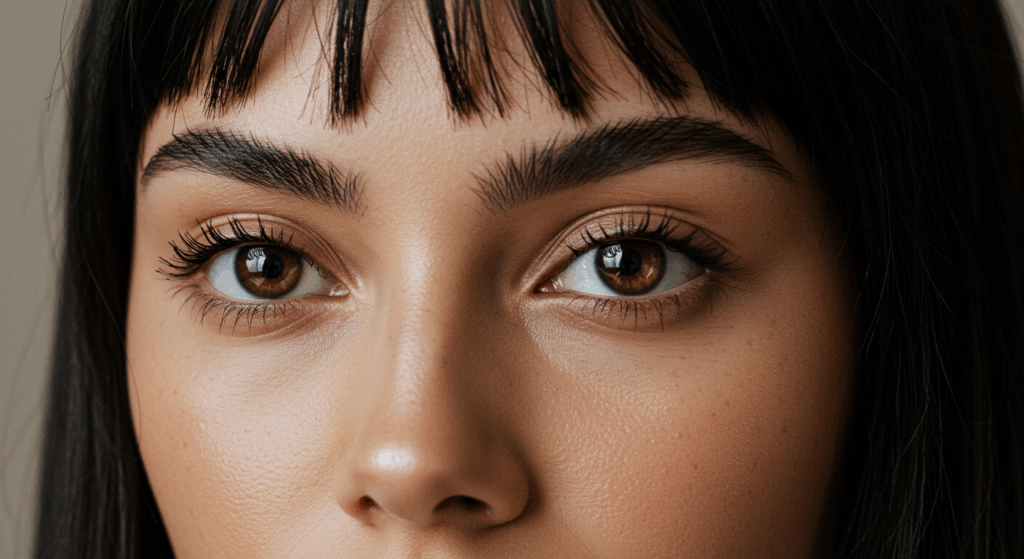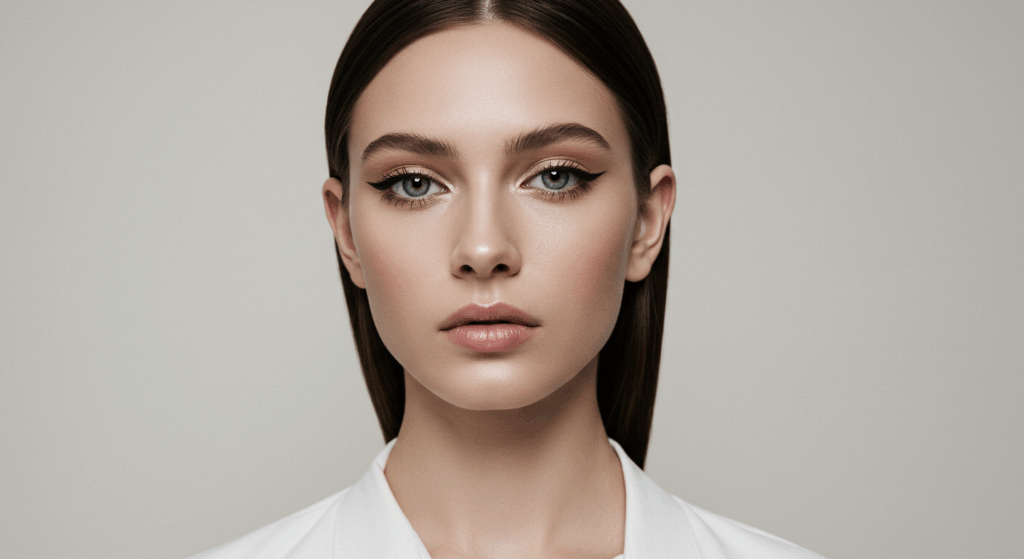Gözler genellikle ruhun penceresi olarak kabul edilir ve yüz estetiğinde ve kişisel ifadede önemli bir rol oynar. Birçok kişi, algılanan kusurları düzeltmek, daha uyumlu bir yüz dengesi elde etmek veya sadece doğal güzelliklerini artırmak gibi çeşitli nedenlerle göz şeklini veya görünümünü değiştirmeye çalışır.
Sırasında Yüz Feminizasyonu Cerrahi (FFS), yüz hatlarının daha geniş bir kapsamını ele alır; bu kapsamlı kılavuz, FFS'den bağımsız olarak, yalnızca göz şeklini ve görünümünü değiştirmeye odaklanan bir dizi özel cerrahi prosedürü inceleyecektir. teknikleri Genel kozmetik iyileştirmelerin ötesine geçen ve bu prosedürlerin bakışınızı nasıl yeniden tanımlayıp özgüveninizi nasıl artırabileceğine dair detaylı bilgiler sunan bu eğitimler, göz kapağı modifikasyonlarından karmaşık kaş şekillendirme ve destekleyici kaş kaldırma işlemlerine kadar, günümüzde mevcut olan dönüştürücü olanaklara dair kapsamlı bir genel bakışa hazır olun.

İçindekiler
Göz Kapağı Değiştirme Ameliyatları: Göz Çerçevesini Geliştirme
Göz kapakları gözlerin çerçevesi görevi görür ve şekli, konumu ve bütünlüğü genel göz estetiğini önemli ölçüde etkiler. Göz kapaklarını hedef alan cerrahi işlemler, göz çevresini gençleştirmenin ve yeniden şekillendirmenin en yaygın ve etkili yolları arasındadır ve düşük göz kapakları, fazla deri ve şişkinlik gibi sorunları giderir. Bu müdahaleler gözleri açabilir, daha uyanık ve genç bir görünüm yaratabilir ve hatta gözün algılanan şeklini bile hafifçe değiştirebilir. Farklı göz kapağı cerrahisi türlerini ve özel uygulamalarını anlamak, istenen estetik sonuçlara ulaşmak için çok önemlidir.
Blefaroplastiyi Anlamak: Üst ve Alt Göz Kapağı Ameliyatı
Blefaroplasti, yaygın olarak bilinen adıyla göz kapağı ameliyatı, üst veya alt göz kapaklarındaki fazla deri, kas ve yağın alınması için tasarlanmış bir kozmetik işlemdir. Yorgun veya yaşlanan gözlerin görünümünü önemli ölçüde iyileştirebilir ve genellikle daha taze ve genç bir görünüm sağlar. Genellikle estetik nedenlerle yapılsa da blefaroplasti, ciddi şekilde sarkık üst göz kapaklarının neden olduğu görme bozukluğu gibi işlevsel sorunları da giderebilir.
Üst Blefaroplasti: Kapüşonlu Göz Kapakları ve Fazla Deri Sorunlarının Çözümü
Üst blefaroplasti Özellikle üst göz kapaklarını hedefler. Zamanla, üst göz kapaklarındaki cilt elastikiyetini kaybedip sarkabilir ve bu da kişinin yorgun, sinirli veya yaşından büyük görünmesine neden olabilecek "kapüşonlu" bir görünüme yol açabilir. Bu işlem, üst göz kapağının doğal kıvrımı boyunca hassas bir kesi yapılmasını içerir ve bu da Cerrah Fazla deriyi ve bazen de altta kalan az miktarda kas veya yağı dikkatlice çıkarmak için kullanılır. Amaç, daha pürüzsüz ve belirgin bir üst göz kapağı kıvrımı oluşturmak ve göz kapağını kaldırarak gözün daha fazla kısmını ortaya çıkarmaktır.
Faydalar ve Beklenen Sonuçlar
Üst blefaroplastinin faydaları hem estetik hem de bazen işlevseldir. Estetik açıdan hastalar daha açık, uyanık ve genç bir göz görünümüne sahip olabilirler. Fazla derinin alınması, daha önce engellenmişse çevresel görüşü de iyileştirebilir. İşlem genellikle doğal görünümlü bir iyileşme sağlar ve kesiler, iyileştikten sonra neredeyse görünmez olacak şekilde stratejik olarak yerleştirilir ve göz kapağının doğal kıvrımlarına kusursuz bir şekilde uyum sağlar.
Alt Blefaroplasti: Göz Altı Torbaları ve Şişkinliklerinin Düzeltilmesi
Alt blefaroplasti, göz altı torbaları, şişkinlik ve kırışıklıklar gibi yaygın sorunları ele alarak göz altı bölgesine odaklanır. Bu sorunlar genellikle yer değiştirmiş yağ yastıkçıkları, zayıflamış destekleyici yapılar ve gevşek cilt nedeniyle ortaya çıkar ve bu da sürekli yorgun veya şiş bir görünüme neden olabilir. İşlem, göz altı konturlarını yumuşatmayı, şişkinliği azaltmayı ve gevşek cildi sıkılaştırarak daha dinlenmiş ve canlı bir görünüm sağlamayı amaçlar.
Teknikler: Transkonjonktival ve Transkutanöz
Alt blefaroplasti için iki temel teknik vardır:
- Transkonjonktival Blefaroplasti: Bu teknik, alt göz kapağının iç kısmından yapılan bir kesiyi içerir, yani dışarıdan herhangi bir kesi veya görünür bir iz yoktur. Genellikle öncelikli olarak yağ aldırma ile ilgilenen ve cilt elastikiyeti iyi olan hastalar için tercih edilir, çünkü cilt eksizyonunu gerektirmez. Bu yaklaşım, şişkinlik ve yağ sarkmasını gidermek için mükemmeldir.
- Transkutanöz Blefaroplasti: Bu yöntem, alt göz kapağının dış kısmında, kirpik çizgisinin hemen altından yapılan bir kesi içerir. Bu kesi, cerrahın fazla deriyi, kası ve yağı çıkarmasına olanak tanır. Hem yağların yeniden konumlandırılması/çıkarılması hem de cildin sıkılaştırılması gereken, belirgin cilt gevşekliği, kırışıklıkları veya daha belirgin göz altı torbaları olan hastalar için uygundur.

Epikantoplasti: İç Göz Katlantısının Değiştirilmesi
Epikantoplasti, gözün iç köşesini (medial kantus) kaplayan bir deri kıvrımı olan epikantal kıvrımı değiştirmek veya çıkarmak için tasarlanmış özel bir cerrahi işlemdir. Bu kıvrım genellikle Doğu Asya kökenli bireylerde görülür ve belirginliği, gözlerin algılanan şeklini ve açıklığını etkileyerek, genellikle gözlere daha yuvarlak veya daha az uzun bir görünüm kazandırır.
Epikantoplasti Ne Zaman Düşünülür?
Epikantoplasti, genellikle daha açık veya uzun bir göz şekli isteyen, özellikle de gözlerinin iç köşesini gizleyen belirgin bir epikantal kıvrımı olan kişiler tarafından tercih edilir. Ayrıca, daha "Batılı" bir göz görünümü elde etmek veya gözler arasında daha fazla mesafe oluşturarak genel yüz uyumunu artırmak isteyenler tarafından da tercih edilir. Gözlerini yatay olarak genişletmek veya gözyaşı kanalını daha görünür hale getirmek isteyen hastalar ideal adaylardır.
Göz Görünümünü Nasıl Değiştirir?
Epikantal kıvrımın derisi dikkatlice çıkarılarak veya yeniden konumlandırılarak, epikantoplasti, gözyaşı kanalı da dahil olmak üzere gözün iç köşesinin daha büyük bir kısmını etkili bir şekilde ortaya çıkarır. Bu, gözlerin daha büyük, daha geniş ve daha belirgin görünmesini sağlayabilir. Ayrıca, daha paralel bir üst göz kapağı kıvrımı da oluşturabilir ( çift göz kapağı ameliyatı, istenirse) ve daha uzun veya "badem" göz şekline katkıda bulunarak, gözlerin genel estetiğini önemli ölçüde artırır.
Canthal Heykeltıraşlık: Göz Şeklini ve Pozisyonunu Yeniden Tanımlamak
Kantal şekillendirme prosedürleri, üst ve alt göz kapaklarının birleştiği köşeler olan kantoları (kanto) değiştirmeye odaklanır. Bu karmaşık ameliyatlar, gözlerin genel şeklini, eğimini ve algılanan konumunu önemli ölçüde değiştirmek için çok önemlidir. Cerrahlar, iç (medial) ve dış (lateral) köşelerdeki göz kapağı tendonlarının gerginliğini ve konumunu ayarlayarak, aşağı doğru eğimli bir gözü kaldırmaktan göz kapağı retraksiyonunu düzeltmeye ve daha çekici veya çarpıcı bir göz şekli oluşturmaya kadar çeşitli estetik hedeflere ulaşabilirler.
Kantoplasti: Gözün Dış Köşesinin Ayarlanması
Kantoplasti Üst ve alt göz kapaklarının birleştiği gözün dış köşesi olan lateral kantusu yeniden şekillendirmek veya konumlandırmak için özel olarak tasarlanmış bir cerrahi işlemdir. Bu bölge, gözün genel eğimini ve şeklini belirlemede kritik bir rol oynar. Cerrahlar, lateral kant tendonunu sıkılaştırarak veya yeniden konumlandırarak, sarkık bir dış köşeyi kaldırmak, daha badem şeklinde bir göz oluşturmak ve hatta bazı işlevsel sorunları düzeltmek gibi önemli estetik değişiklikler elde edebilirler.
Lateral Kantoplasti: Göz Eğimini Kaldırma ve Yeniden Şekillendirme
Lateral kantoplasti, kantoplastinin en yaygın şeklidir. Gözün dış köşesini kaldırmak için lateral kantal tendonun manipüle edilmesini içerir. Bu işlem, gözlerin üzgün veya yorgun görünmesine neden olabilen aşağı dönük dış kantusu düzeltebilir. Bu nokta hafifçe kaldırılarak gözler daha uyanık, genç ve genellikle daha "kedi" veya "badem" şekline kavuşabilir. Ayrıca alt göz kapağını sıkılaştırarak desteğini iyileştirebilir ve gevşekliği azaltabilir.
Kozmetik Hedefler ve İdeal Adaylar
Lateral kantoplastinin temel kozmetik hedefleri arasında daha genç, uyanık ve estetik açıdan hoş bir göz şekli elde etmek yer alır. İdeal adaylar, düşük dış kantuslu kişiler, gözlerinde hafif bir yukarı eğim arayanlar veya gevşek alt göz kapağı için ek desteğe ihtiyaç duyan kişilerdir. Kapsamlı periorbital gençleştirme sağlamak için genellikle diğer göz kapağı prosedürleriyle birlikte kullanılır.
Medial Kantoplasti: İç Göz Estetiğine Yönelik
Lateral kantoplastiden daha az yaygın olsa da medial kantoplasti, gözün iç köşesine (medial kantus) odaklanır. Bu işlem, genellikle epikantal kıvrımların görünümünü azaltmak veya daha açık ve belirgin bir iç göz bölgesi oluşturmak amacıyla medial kantusu yeniden şekillendirmek için tasarlanmıştır. Daha karmaşık bir işlem olmasına rağmen, interkantal mesafeyi (gözlerin iç köşeleri arasındaki mesafe) ayarlamak için de yapılabilir.
Alt Göz Kapağı Geri Çekilmesinin Düzeltilmesi
Alt göz kapağı retraksiyonu, alt göz kapağının çok aşağıda durması ve irisin altındaki göz akının (skleral çıkıntı) daha fazla açığa çıkmasıyla oluşan bir durumu ifade eder. Bu durum, daha önce geçirilmiş göz kapağı ameliyatı, travma, yara izi veya altta yatan tıbbi durumlar gibi çeşitli nedenlerle ortaya çıkabilir. Gözlerin geniş veya "çukur" görünmesi gibi estetik kaygıların yanı sıra, alt göz kapağı retraksiyonu kuru göz, tahriş ve açıkta kalma keratopatisi gibi işlevsel sorunlara da yol açabilir.
Alt Göz Kapağı Yeniden Konumlandırmasında Cerrahi Yaklaşımlar
Alt göz kapağı retraksiyonunu düzeltmek genellikle alt göz kapağını kaldırmayı ve desteklemeyi amaçlayan karmaşık cerrahi teknikleri içerir. Yaklaşımlar şunları içerebilir:
- Kantopeksi/Kantoplasti: Alt göz kapağına destek sağlamak amacıyla lateral kantal tendonun sıkılaştırılması ve kaldırılması.
- Aralayıcı Greftler: Alt göz kapağına dikey yükseklik ve destek eklemek için doku greftleri (örneğin sert damak grefti, kulak kıkırdağı, hücresiz dermal matris) yerleştirilmesi.
- Orta Yüz Germe: Bazı durumlarda, orta yüz germe ameliyatı, elmacık kemikleri arasındaki yağ yastığının yukarı kaldırılmasına yardımcı olarak alt göz kapağına alttan destek sağlayabilir.
- Askı Prosedürleri: Alt göz kapağını destekleyen bir askı oluşturmak için dikiş veya greft kullanılır.
Teknik seçimi, retraksiyonun şiddetine, mevcut dokuların kalitesine ve hastanın bireysel anatomisi ile hedeflerine bağlıdır. Amaç, doğal göz kapağı pozisyonunu geri kazandırmak, gözü korumak ve estetik dengeyi iyileştirmektir.
Kaş Kaldırma İşlemleri: Üst Yüzün Yükseltilmesi ve Yeniden Şekillendirilmesi
Kaş kaldırma işlemleri, göz kapaklarını veya göz küresini doğrudan etkilemese de, gözlerin genel görünümünü ve çerçevesini değiştirmede önemli bir rol oynar. Düşük veya kalın bir kaş, yorgun, öfkeli veya üzgün bir ifade yaratabilir ve göz kapağında fazla deri olmasa bile, düşük göz kapaklarının görünümüne katkıda bulunabilir. Kaş kaldırma, kaşları kaldırarak ve yeniden şekillendirerek gözleri açabilir, alındaki kırışıklıkları giderebilir ve daha taze ve genç bir üst yüz oluşturarak dolaylı olarak göz estetiğini iyileştirebilir.
Kaş Kaldırma Çeşitleri ve Göz Görünümüne Etkileri
Her biri belirli endişeleri gidermek ve farklı estetik sonuçlar elde etmek üzere tasarlanmış çeşitli kaş kaldırma teknikleri mevcuttur. Teknik seçimi, kişinin anatomisine, kaş düşüklüğü derecesine ve istenen sonuçlara bağlıdır. Tüm yöntemler kaşları kaldırmayı ve alnı pürüzsüzleştirmeyi amaçlar; bu da gözlerin algılanan açıklığını ve şeklini önemli ölçüde iyileştirebilir.
Endoskopik Kaş Kaldırma: Minimal İnvaziv Kaldırma
Endoskopik kaş kaldırma, popüler ve minimal invaziv bir tekniktir. Saç çizgisinin içine gizlenmiş birkaç küçük kesi içerir. Bu kesilerden, cerrahın alttaki dokuları bir monitörde görüntülemesini sağlayan bir endoskop (kameralı ince bir tüp) yerleştirilir. Daha sonra alın ve kaş dokularını serbestleştirmek ve kaldırmak için özel aletler kullanılır ve böylece daha yüksek bir konumda sabitlenirler. Bu teknik, geleneksel yöntemlere kıyasla minimum yara izi, daha az şişlik ve daha hızlı iyileşme sağlarken, göz çevresini açan doğal görünümlü bir kaş kaldırma sağlar.
Koronal Kaş Kaldırma: Kapsamlı Alın ve Kaş Gençleştirme
Koronal kaş kaldırma, daha geleneksel ve kapsamlı bir tekniktir. Başın üst kısmında, genellikle kulaktan kulağa kadar saç çizgisinin arkasına gizlenmiş tek bir kesi yapılır. Bu yaklaşım, cerrahın alın ve kaş dokularına doğrudan ve kapsamlı bir erişim sağlayarak, önemli ölçüde kaldırma ve fazla derinin alınmasını sağlar. Endoskopik yönteme göre daha invaziv olsa da, çarpıcı ve uzun süreli sonuçlar elde edebilir, derin alın kırışıklıklarını etkili bir şekilde düzeltebilir ve kaşları belirgin şekilde kaldırarak daha açık ve gençleşmiş bir göz görünümü sağlayabilir.
Doğrudan ve Dolaylı Kaş Kaldırma: Hedefli Çözümler
Endoskopik ve koronal yöntemlerin ötesinde, direkt ve indirekt kaş kaldırma daha hedefli çözümler sunmaktadır:
- Direkt Kaş Kaldırma: Bu yöntem, kaşın hemen üzerinden yapılan bir kesiyi içerir ve kaşı kaldırmak için deri ve kasın hassas bir şekilde çıkarılmasını sağlar. Genellikle yaşlı hastalar veya alınlarında derin kırışıklıklar olan hastalar için tercih edilir, çünkü yara izi daha belirgin olabilir ve çok etkili bir doğrudan kaldırma sağlar.
- Dolaylı Kaş Kaldırma (Pretrikial/Saç Çizgisi Kesisi): Bu teknik, saç çizgisinin hemen önünde bir kesi yapılmasını gerektirir. Alın derisinden bir şerit alınmasını ve kaşların kaldırılmasını sağlar; bu da yüksek alnı kısaltabilir. İz saç çizgisinde gizlidir, bu da saç çizgisinin gerilemesinden endişe duyanlar için iyi bir seçenektir.
Kaş Kaldırmanın Göz Açıklığı ve Şeklini Nasıl Etkilediği
Kaş kaldırma, kaşları kaldırarak gözlerin algılanan açıklığını ve şeklini doğrudan etkiler. Kaş kaldırıldığında, gözlerin üzerindeki cilt sıkılaşır, göz kapaklarındaki düşüklük azalır ve gözler daha büyük, daha parlak ve daha canlı görünür. Ayrıca alındaki yatay çizgileri ve kaşlar arasındaki çatık çizgileri yumuşatarak daha rahat ve genç bir genel yüz ifadesine katkıda bulunabilir. Kaş kemerinin hafifçe yukarı doğru yeniden konumlandırılması, gözün genel estetik şeklini de iyileştirerek daha taze ve çekici bir görünüm kazandırır.
Göz Değişikliği İçin Cerrahi Düşüncelerin Yönlendirilmesi
Herhangi bir cerrahi yolculuğa çıkmak dikkatli bir değerlendirme ve kapsamlı bir hazırlık gerektirir. Göz şeklini ve görünümünü değiştirmeyi amaçlayan işlemler için, doğru uzmanı seçmekten beklentileri yönetmeye ve iyileşme sürecini yönetmeye kadar sürecin tüm inceliklerini anlamak özellikle önemlidir. Bilinçli kararlar almak, yalnızca güvenliğinizi sağlamakla kalmayacak, aynı zamanda istenen estetik sonuçlara ulaşmanıza da önemli ölçüde katkıda bulunacaktır.
Doğru Kurul Sertifikalı Cerrahı Seçmek
Göz cerrahisi prosedürlerinin başarısı ve güvenliği büyük ölçüde cerrahınızın uzmanlığına ve deneyimine bağlıdır. Hassas yüz ve göz çevresi prosedürlerine odaklanan, kurul onaylı bir plastik cerrah veya oküloplastik cerrah seçmek son derece önemlidir. Düşündüğünüz belirli göz ameliyatlarında kapsamlı deneyime sahip bir cerrah arayın. Cerrahın referanslarını doğrulayın, öncesi ve sonrası portföylerini inceleyin ve önceki hastaların referanslarını alın. Son derece yetenekli bir cerrah, doğal görünümlü sonuçlar için çok önemli olan yüz anatomisi ve estetik denge konusunda derin bir anlayışa sahip olacaktır.
Potansiyel Riskleri ve Komplikasyonları Anlamak
Her cerrahi işlemde olduğu gibi, göz ameliyatı da potansiyel riskler ve komplikasyonlar taşır. Ciddi komplikasyonlar nadir görülse de, enfeksiyon, kanama, anesteziye karşı olumsuz reaksiyonlar, geçici uyuşukluk, asimetri, göz kuruluğu, gözlerin kapanmasında zorluk ve çok nadir durumlarda görme değişiklikleri gibi olasılıkların farkında olmak önemlidir. Cerrahınız, konsültasyonunuz sırasında bu riskleri ayrıntılı olarak görüşerek, bilinçli bir karar vermenizi ve işlemin tüm yönlerini anlamanızı sağlayacaktır.
İyileşme Süreci ve Ameliyat Sonrası Bakım
İyileşme süreci, uygulanan işleme bağlı olarak değişmekle birlikte, genellikle ameliyattan sonraki ilk günlerde bir miktar şişlik, morarma ve rahatsızlık hissi yaşanır. Ciddi şişliklerin tipik iyileşme süreleri 1 ila 3 hafta arasında değişirken, küçük şişliklerin tamamen iyileşmesi birkaç ay sürebilir. Ameliyat sonrası bakım için temel ipuçları şunlardır:
- Şişliği azaltmak için soğuk kompres uygulaması yapılır.
- Özellikle uyurken başın yüksekte tutulması.
- Birkaç hafta boyunca yorucu aktivitelerden ve ağır kaldırmaktan kaçının.
- Reçeteli ağrı kesici ve antibiyotikleri belirtildiği şekilde alın.
- Tüm yara bakımı talimatlarına titizlikle uyulması.
- Cerrahınızla olan tüm takip randevularınıza katılın.
Gerçekçi Beklentiler Belirleme: Ameliyat Neleri Başarabilir ve Neleri Başaramaz?
Göz kapağı ameliyatının sonuçları hakkında gerçekçi beklentilere sahip olmak çok önemlidir. Bu işlemler görünümü önemli ölçüde iyileştirebilir ve belirli endişeleri giderebilir, ancak tüm estetik istekleri karşılayan bir çözüm değildir. Ameliyat, yüzünüzü güzelleştirebilir, gençleştirebilir ve güzelleştirebilir, ancak tüm yüz yapınızı kökten değiştiremez veya tamamen farklı bir kişilik yaratamaz. Cerrahınızla hedefleriniz ve gerçekçi olarak neyin başarılabileceği konusunda kapsamlı bir görüşme, memnuniyetsizliği önlemeye ve sonuçlardan memnun kalmanıza yardımcı olacaktır.
Detaylı Danışmanlığın Önemi
Potansiyel cerrahınızla yapacağınız detaylı ve açık bir konsültasyon, cerrahi yolculuğunuzun tartışmasız en kritik adımıdır. Bu görüşme sırasında estetik hedeflerinizi, tıbbi geçmişinizi, daha önce geçirdiğiniz ameliyatları ve ilaçlarınızı açıkça konuşmalısınız. Cerrahınız yüz anatominizi değerlendirecek, en uygun prosedürleri açıklayacak, olası sonuçları görüşecek, riskleri özetleyecek ve iyileşme süreci hakkında net bir bilgi verecektir. Bu, tüm sorularınızı sormanız, endişelerinizi dile getirmeniz ve cerrahınız ve önerilen plan konusunda kendinizi rahat ve güvende hissetmeniz için bir fırsattır.
Çözüm
Göz şeklini ve görünümünü iyileştirme veya değiştirme arzusu, çoğunlukla kişinin yüz hatlarında daha fazla özgüven ve uyum arayışıyla yönlendirilen, son derece kişisel bir yolculuktur. Bu kapsamlı rehberde incelendiği gibi, genel cerrahi kapsamının ötesinde dikkate değer bir dizi cerrahi prosedür mevcuttur. Yüz Dişileştirme AmeliyatıHer biri benzersiz dönüşüm yolları sunar. Blefaroplasti ve epikantoplastinin incelikli iyileştirmelerinden, kantal şekillendirmenin daha karmaşık ayarlamalarına ve kaş kaldırmanın destekleyici iyileştirmelerine kadar, modern plastik cerrahi bakışınızı yeniden tanımlamak için sofistike çözümler sunar.
Önemli Çıkarımlar
- Çeşitli Seçenekler Mevcuttur: FFS'nin ötesinde, blefaroplasti, epikantoplasti, kantoplasti ve kaş kaldırma gibi çok sayıda özel cerrahi, özellikle göz şeklini ve görünümünü hedef alır.
- Bireysel İhtiyaçlara Göre: Her prosedür, göz kapaklarındaki düşüklükleri ve göz altı torbalarını düzeltmekten, gözlerdeki çekikliği ve açıklığı yeniden tanımlamaya kadar farklı estetik hedeflere yöneliktir.
- Uzmanlığın Önemi: Güvenli ve estetik açıdan hoş sonuçlar elde etmek için periorbital ve yüz cerrahisi konusunda uzmanlığı olan, kurul onaylı bir cerrah seçmek çok önemlidir.
- Gerçekçi Beklentiler ve Danışmanlık: Başarılı bir deneyim için potansiyel sonuçları, riskleri, iyileşme sürecini tam olarak anlamanız ve cerrahınızla açık bir diyalog kurmanız çok önemlidir.
SSS
Göz kapağı ameliyatı sonrası iyileşme süreci genellikle ne kadar sürer?
Üst veya alt göz kapağı ameliyatı (blefaroplasti) için, belirgin şişlik ve morarma da dahil olmak üzere ilk iyileşme süreci genellikle yaklaşık 1 ila 3 hafta sürer. Çoğu hasta 7-10 gün içinde hafif aktivitelere ve işe dönebilir. Ancak, küçük şişliklerin tamamen geçmesi ve nihai sonuçların alınması birkaç ay sürebilir. Optimum iyileşme için cerrahınızın ameliyat sonrası bakım talimatlarına uymanız çok önemlidir.
Bu göz şekli ameliyatları diğer yüz ameliyatlarıyla kombine edilebilir mi?
Evet, birçok göz şekli değiştirme ameliyatı, daha kapsamlı bir yüz gençleştirme veya uyum sağlamak için genellikle diğer yüz estetiği prosedürleriyle birleştirilebilir. Yaygın kombinasyonlar arasında blefaroplasti ve kaş kaldırma veya kantoplasti ve orta yüz germe yer alır. İşlemlerin birleştirilmesi bazen tek bir iyileşme sürecine yol açabilse de, genel iyileşme süresini de uzatabilir. Bu konu, konsültasyon sırasında cerrahınızla her zaman ayrıntılı olarak görüşülmelidir.
Göz şeklini değiştirme ameliyatlarının sonuçları kalıcı mıdır?
Göz şeklini değiştirme ameliyatları sırasında yapılan yapısal değişiklikler genellikle kalıcı olsa da (örneğin, deri alınması veya tendonların yeniden konumlandırılması), yaşlanma süreci devam eder. Yer çekimi, güneşe maruz kalma ve doğal cilt gevşekliği zamanla dokuları etkilemeye devam eder. Bu nedenle, sonuçlar uzun süreli olsa da, yaşlanmanın etkilerine karşı tamamen bağışık değildirler. Birçok hasta, rötuş işlemlerini düşünmeden önce sonuçlarının keyfini 10-15 yıl, hatta daha uzun süre çıkarır.
Estetik göz ameliyatı için ideal yaş kaçtır?
Tek bir "ideal" yaş yoktur; çünkü kozmetik göz ameliyatı adaylığı, kronolojik yaştan ziyade bireysel anatomiye, cilt elastikiyetine ve estetik kaygılara bağlıdır. Blefaroplasti genellikle 30'lu yaşlar ve üzeri kişilerde, göz çevresindeki yaşlanma belirtileri daha belirgin hale geldikçe uygulanır. Daha genç bireylerde ise dikkate almak Epikantoplasti veya kantoplasti gibi doğal göz şeklini değiştirmeye yönelik işlemler. En iyi yaklaşım, özel ihtiyaçlarınızı değerlendirebilecek ve yaşınızdan bağımsız olarak uygun bir aday olup olmadığınızı belirleyebilecek nitelikli bir cerraha danışmaktır.
Ziyaret etmek Dr.MFO Instagram profili gerçek hasta dönüşümlerini görmek için! Yüz bakımıyla elde edilen inanılmaz sonuçlara bir göz atın feminizasyon ameliyatı ve diğer prosedürler. Profilde öne çıkan öncesi ve sonrası fotoğrafları sergileniyor Dr.MFO'nin doğal görünümlü, güzel sonuçlar yaratma konusundaki uzmanlığı ve sanatsal vizyonu.
Yolculuğunuzda bir sonraki adımı atmaya hazır mısınız? Planlayın ücretsiz danışmanlık ile Dr.MFO ( En İyi Yüz Feminizasyon Cerrahı Sizin için) bugün. Danışmanlık sırasında hedeflerinizi tartışabilir, aklınıza takılan soruları sorabilir ve nasıl yapacağınız hakkında daha fazla bilgi edinebilirsiniz. Dr.MFO İstediğiniz görünüme ulaşmanıza yardımcı olabilir. Seçeneklerinizi keşfetmek ve olup olmadığını görmek için bu ücretsiz fırsattan yararlanmaktan çekinmeyin. Dr.MFO sizin için doğru seçimdir.









